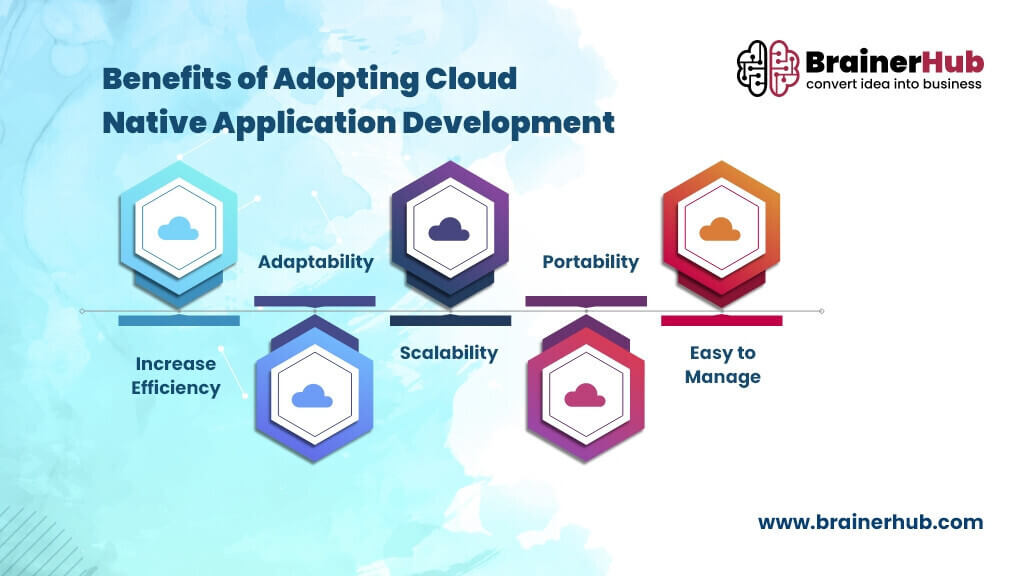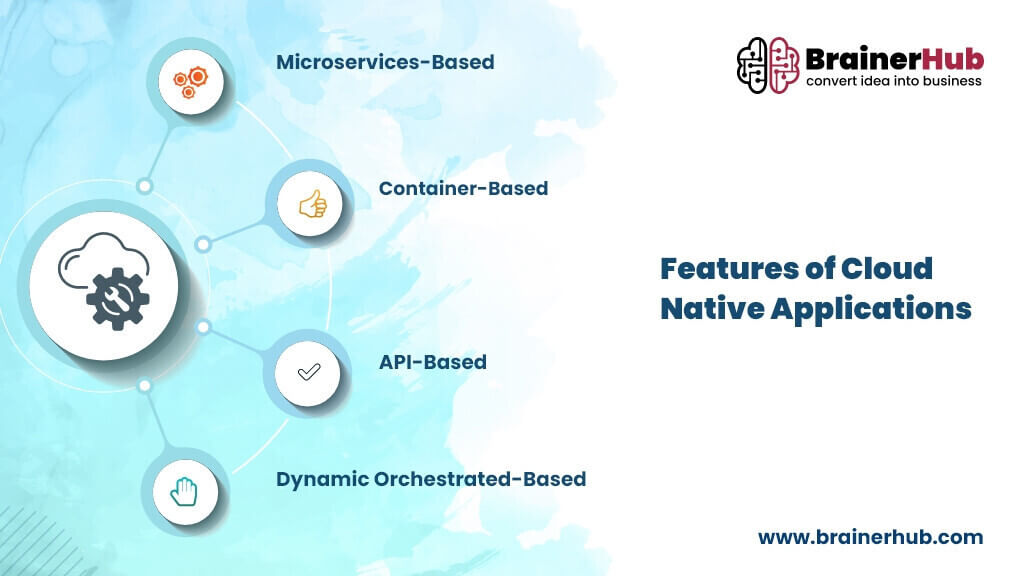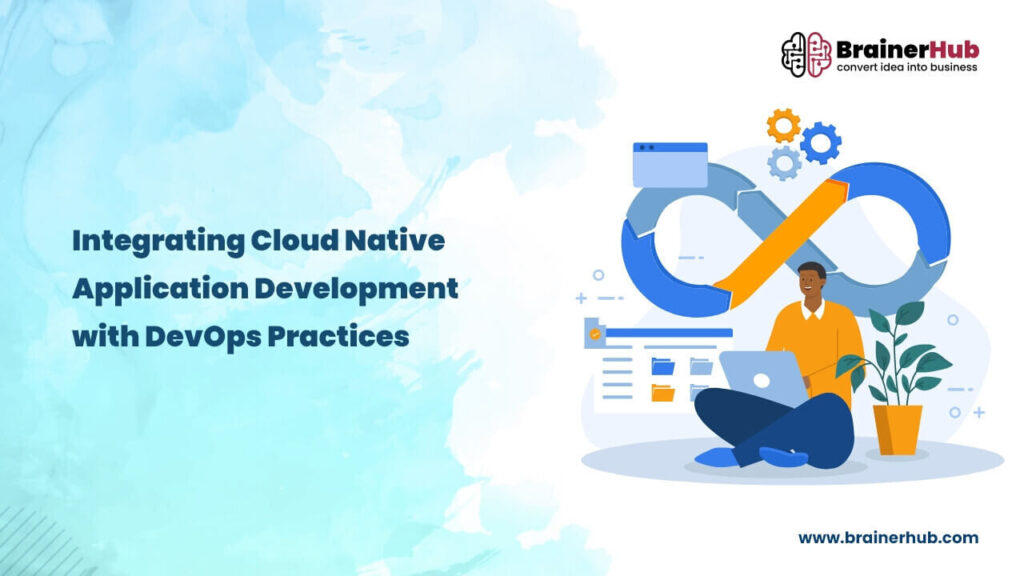Cloud-native apps enable businesses to stay far ahead of the competition, adapt quickly to client expectations, and thrive in software-driven marketplaces that are rapidly evolving.
What Does Cloud-Native App Development stand for?
The goal of modern businesses is to create apps that are incredibly durable, scalable, and adaptable so they can easily upgrade to suit changing client needs. Further cloud native is used to develop, implement, and oversee contemporary applications in cloud computing settings. They accomplish this by utilizing cutting-edge methods and instruments that naturally facilitate application development on cloud infrastructure. Adopters gain a creative, competitive edge from these cloud-native technologies, which enable quick and frequent updates to apps without affecting service delivery.
How DevOps Can Help in Making the Application with Cloud Native?
Two of the most important technology developments in recent years are cloud computing and DevOps, which appeared virtually simultaneously and mutually supported each other. Cloud computing allows organizations to scale and provision resources on-demand without having to make costly hardware or software investments, it has completely changed how companies manage their IT infrastructure. DevOps basically helps businesses to create, test, and launch applications faster and effectively.
Generally, DevOps automates the software development and deployment process, allowing companies to produce high-caliber apps more quickly by utilizing the scalability and flexibility of cloud computing. Moreover, it has also contributed to the evolution of cloud computing, as new cloud-based tools and services have been developed as a result of its emphasis on automation and teamwork. Businesses can now develop and deploy applications with greater agility, responsiveness, and efficiency thanks to the combined effects of cloud computing and DevOps.
Let’s now discuss the benefits of cloud native-application development that will help the business to grow and achieve optimum results.

Benefits of Adopting Cloud Native Application Development
The following are the benefits of cloud-native applications to boost productivity with cloud native applications.
Increase Efficiency
Continuous delivery (CD) and other agile methodologies like DevOps are brought about by cloud-native development. Cloud services, automated technologies, and contemporary design practices enable developers to create scalable apps quickly.
Adaptability
Cloud-native applications can adapt to the demands of the company without establishing dependencies that force users to use a specific software version.
Scalability
Software-defined infrastructure is used by cloud-native apps to lessen or do away with hardware dependencies. Adding commodity services to an existing server base allows for horizontal expansion without the need to upgrade its CPU, storage, or memory.
Portability
Without altering the code, developers may create apps that function on a variety of devices, including mainframes and mobile phones, by utilizing containers. To prevent vendor lock-ins, cloud-native apps are vendor-neutral and employ containers to move microservices between the infrastructure of several providers.
Easy to Manage
Cloud-native apps are easier to control and upgrade. Every component and microservice that is updated can be monitored by developers. Applications are broken up into smaller services, so instead of worrying about how one microservice will interact with another.
Boost Your Apps to New Heights! Embrace Cloud Native Methodologies for Future-Ready Applications.
Assessing Cloud Native Apps and DevOps
Let’s understand cloud-native apps and DevOps and how they process together to boost business productivity.
Resilient
When cloud native apps and DevOps function together it utilizes the dynamic aspect of operating on a platform, accepting mistakes rather than attempting to avoid them.
Agile
Cloud native apps and DevOps adapt agile methodology to allow fast deployments and iterations.
Operable
Incorporating application life cycle management from within the program rather than depending on outside monitors and processes.
Observable
This feature will help to provide details for addressing inquires regarding the status of the application.
Containers
Applications and their dependencies are bundled into a single, portable unit by containers, which enables consistent operation in different settings. They are ideal for cloud native applications as they offer efficiency, consistency, and isolation.
Microservices
This architectural style divides larger programs into smaller, self-contained services. The self-contained is divided in terms of development, deployment, and scaling. This will let teams work on many application components at the same time, increasing efficiency and adaptability.
Continuous Integration and Continuous Delivery (CI/CD)
The building, testing, and deployment of apps are automated using CI/CD pipelines, enabling frequent and dependable releases. This shortens the time it takes to bring new features and enhancements to the market by identifying and resolving problems more quickly.

DevOps Implementation in Cloud Native-Environment
Now, let’s discuss in detail the implementation of DevOps in cloud-native as it has the ability to unleash enormous possibilities for your business, allowing it to develop more quickly, scale more effectively, and provide a better overall user experience.
Step 1. Adopt a DevOps Culture
Establishing a culture that promotes cooperation, communication, and ongoing development is the first step in deploying DevOps in a cloud-native setting. This entails dismantling the conventional divisions that separate the development and operations teams as well as creating a collaborative atmosphere where all parties strive towards common objectives.
Step 2. Select the Appropriate Tools
There are several tools and technologies available in the cloud native ecosystem that can assist in implementing DevOps principles. Further, popular choices like infrastructure-as-code, continuous integration, delivery systems, and containers. Businesses should spend some time before choosing appropriate tools that will fit their criteria and fulfill project requirements.
Step 3. Complete Automation
DevOps relies heavily on automation, which is crucial in cloud-native environments. Tasks like developing, testing, and deploying apps may be automated to improve workflow, lower the risk of human errors, and guarantee that your apps are constantly up-to-date and functional.
Step 4. Implementing Continuous Integration and Continuous Delivery (CI/CD)
DevOps implementation in a cloud-native environment requires a strong CI/CD pipeline. This enables you to make sure that new features and enhancements reach your clients as soon as possible by automatically building, testing, and deploying your apps as soon as changes are made.
Step 5. Monitor and Learn
It’s critical to keep an eye on the functionality and efficiency of your apps at all times in a cloud-native DevOps environment. You will be able to make data-driven decisions about how to optimize your applications and enhance the user experience by using this to assist your potential problems.
Step 6. Highlight Security and Compliance
Integrating security best practices into your DevOps processes is crucial, as security is a crucial component of cloud native design. This can entail employing tools for container image scanning, automating security testing, and building security policies into your infrastructure-as-a code templates.

What are the Best Features of Cloud Native Applications?
Here are the following features that help to build cloud-native applications that will help your business and achieve overall performance efficiency.
1. Microservices-Based
Cloud-native application can be divided into several separate services, or modules, using microservices. Every service supports a distinct business objective and makes use of its data. Further, application program interfaces are used by these modules to communicate with one another to achieve optimum results.
2. Container-Based
Software known as containers allow a program to function independently with physical resources by logically isolating it. This feature helps to prevent apps from using all of the shared resources on the host. Additionally, they permit several instances of the same service.
3. API-Based
Microservices and containers are connected via APIs. Further, this offers easier security and maintenance assistance. It functions as a link between loosely linked services, facilitating communication between microservices.
4. Dynamic Orchestrated-Based
Container lifecycles can get complicated with time, hence technologies for orchestration are employed to manage them. Resource management, load balancing, scheduling restarts, provisioning, and deploying containers onto server cluster nodes are all handled by container orchestration technologies.

Navigating the Future of Native-Cloud Applications with DevOps
Businesses may create highly scalable, resilient, and portable apps using cloud-native technologies like Kubernetes, containerization, and microservices design. Cloud computing and cloud-native technologies are tightly related to DevOps, which prioritizes automation, cooperation, and continuous integration and delivery. Automating software development and deployment processes is made possible for enterprises by DevOps approaches, which capitalize on the scalability and flexibility of cloud infrastructure. The entire software development lifecycle is streamlined by this automation, which results in the delivery of high-quality products more quickly.
Final Thoughts on Cloud Native Apps and DevOps Practices
In conclusion, businesses aim to achieve higher success and unlock amazing potential by embracing cloud native architecture and DevOps. Further, integrating them both will change the way you create, implement, and oversee apps. Cloud-native and DevOps have revolutionized software development by enabling companies to innovate swiftly, respond quickly to market shifts, and produce high-caliber software products at an astounding rate.
Cloud-native design provides unmatched scalability and speed, while DevOps techniques improve continuous delivery and automation. Organizations can attain enhanced application quality, cost optimization, accelerated time-to-market, and enhanced efficiency by adopting cloud-native and DevOps practices. The power of cloud-native and DevOps in tandem will be indispensable for businesses seeking to maintain their competitive edge and provide superior software solutions, given the ongoing evolution of the industry.
Put your Trust in DevOps Consulting Company for Cloud Native Application Development Services with DevOps integration. To learn more, contact our skilled team today!

